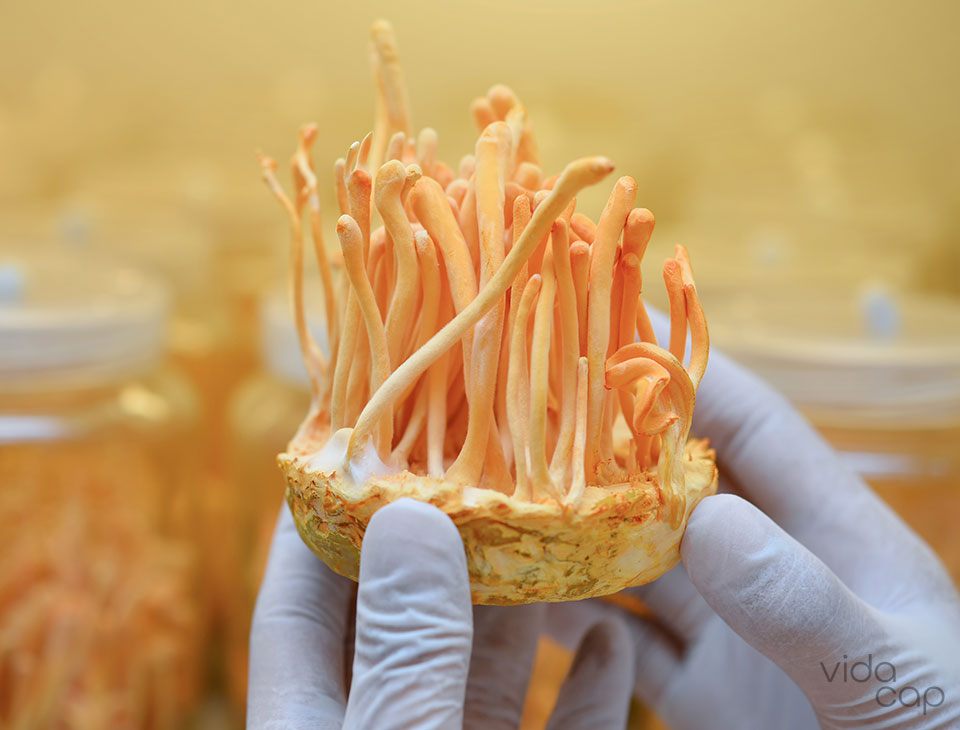
Amanita Muscaria and the Secrets of Soma
 Audrey Ferguson |
Updated on: May 15, 2024
Audrey Ferguson |
Updated on: May 15, 2024
Humans have revered Amanita muscaria for its spiritual properties for centuries. It is a crucial element of Northern European and Siberian shamanic practices.
Many believe that our use of this mystical mushroom dates back even further, to the Indus Valley, 3500 years ago. It has been put forward as a candidate for soma - a plant, god, and intoxicating beverage that features heavily in the sacred Hindu text Rigveda.
Soma’s true identity has been lost over the years, but there are some compelling reasons why Amanita muscaria could be the “plant” in question. However, this is hotly debated by scholars, and the theory has been widely discredited.
Join us as we attempt to unravel the secrets of soma and whether Amanita muscaria could be the answer.
The Mysteries of Soma
Soma is one of the most prevalent themes in Rigveda. It appears throughout the text, and one of the scripture’s ten books is entirely dedicated to it. It is described as a plant, a god, and a beverage that is consumed ritually and imparts a deep euphoria to those who drink it. The text famously states:
“We have drunk soma and become immortal; We have attained the light, the gods discovered.”

Rigveda is a sacred Hindu text, but it originated from the Aryans, who traveled from the North and settled in the Indus Valley in the second millennia BC.
The Aryans were closely related to people of the Iranian plateau, such as the Zoroastrians. This is relevant because soma shares many features with haoma, a divine plant and beverage mentioned in the Zoroastrian text Avesta. Many consider soma and haoma to be the same.
The 1028 hymns that comprise Rigveda were transmitted orally until the mid-19th century when Western scholars transcribed them from Hindu priests. Therefore, much of their content has been reinterpreted over the years, and some of the original meanings have been lost. This includes the identity of soma, a question that has puzzled intellectuals and scientists alike over the past few decades.
Many different plants have been put forward as potential candidates. However, one of the most popular theories is that soma was, in fact, not a plant but a mushroom - Amanita muscaria.
Is Soma Amanita Muscaria?
The best-known proponent of the Amanita muscaria soma theory is American ethnomycologist R. Gordon Wasson. He made a convincing case in his 1968 book Soma: Divine Mushroom of Immortality.
Since the book’s publication, many have agreed with Wasson that Amanita muscaria is the most likely candidate for the sacred “plant.” However, some strongly oppose the idea. Below, we will explore the arguments for and against soma being the mushroom Amanita muscaria.

Arguments for Amanita Muscaria Being Soma
According to Wasson, there are many hints in Rigveda that Amanita muscaria is the true identity of soma. Some of his most convincing points include:
- There is no mention in Rigveda of soma having roots, leaves, blossoms, or seeds. Therefore, it is likely to be a mushroom rather than a plant.
- The soma drink is created by extracting the juice of the “plant” by mixing it with water, pressing it with stones, and filtering it with a woolen cloth. This is similar to how Amanita muscaria is typically prepared for consumption.
- Soma’s juice is described as tawny yellow, the same color as Amanita muscaria
- The Aryans came from the North, where Amanita muscaria would have grown abundantly.
- Soma is described as growing in the mountains. In the warmer climates of the Indus Valley, this would potentially be the only area where these mushrooms could grow.
Wasson also put forward several other arguments for Amanita muscaria being soma. However, these are mostly speculation.
For example, soma is often associated with the sun, which he likens to the mushroom’s bright red cap. He also mentions soma being filtered by the human body. In some cultures, drinking the urine of someone who has consumed Amanita muscaria is a favored ingestion method.
Arguments Against Amanita Muscaria Being Soma
Many disagree with Wasson, and some have even published lengthy papers criticizing his theory. One example is The Mushroom Soma Theory: A Critical Analysis by researcher and author Chris Bennet, published in 2010. His arguments against Amanita muscaria being soma include:
- In one section of Rigveda, soma is described as a green and purple tree.
- This chapter says that the stones used to press the juice from soma turned green.
- In another chapter, soma is described as “ever-green, golden-hued, refulgent, with a thousand boughs.”
- Soma is often associated with the stems of a plant. The stems of Amanita muscaria are less potent than the caps.
Bennet suggests the true identity of soma is far more likely to be cannabis, which is native to the Indus Valley and likely originated high in the Hindu Kush mountains.

There are also several mentions of mixing soma with milk in Rigveda. This holds some similarities with the intoxicating Indian beverage bhang.
If soma were cannabis, mixing it with milk would be essential to aid the absorption of its active compounds, which are fat soluble. Conversely, the active compounds in Amanita muscaria are water-soluble, so adding milk would be unnecessary.
Scholars have proposed several other candidates for soma over the years, including ephedra, Syrian rue, opium poppies, and the psilocybin-containing mushrooms Psilocybe cubensis. It could be that soma contained a mixture of the above plants and fungi or none of them at all. We may never know for sure.
Final Thoughts on Amanita Muscaria and the Secrets of Soma
Amanita muscaria has been used for spiritual and religious purposes throughout history. Could it be the true identity of the elusive soma?
Although there is little evidence regarding the Amanita muscaria mushroom in India, many people believe it could. Soma does have some similarities with this mushroom, but not enough to confirm they are one and the same. Indeed, several other possible candidates make more sense from a geographical perspective.
Whether Amanita muscaria is the true identity of soma or not, there is no denying that it is a captivating mushroom with many mysterious qualities. Learn more about its unique chemistry, effects, and how to consume it safely right here on the VidaCap blog.
-
new
 Amanita Muscaria Mushroom GummiesCalm | Mindfulness | Balance$38 Shop now
Amanita Muscaria Mushroom GummiesCalm | Mindfulness | Balance$38 Shop now- Experience a calming and balancing buzz effect.
- 8 Delicious Berry-Mango and Citrus gummies
- 500mg amanita extract per gummy for best results
- Proudly vegan and gluten-free
- Manufactured in the USA with high-quality standards

Audrey has worked as a registered dietitian for 6 years. She graduated from the University of Florida in 2013 with a Bachelor of Science degree. In 2014 she began an internship with the Veterans Affairs Healthcare System, and was hired as an Outpatient Dietitian following graduation. She started her career counseling a variety of patients with different health concerns and disease states. After a few years into practice, she found her passion was working in cancer care, and has spent the last 4 years specializing in oncology nutrition.
In her practice, Audrey has spent a significant amount of time reviewing literature on herbal and dietary supplements in the cancer care setting. Through her work at Vidacap, she hopes to continue to expand her knowledge and understanding of the benefits of supplements in conjunction with promoting a healthy, balanced diet and management of overall health and well being.
Lynn Marie Morski
Reviewed by Lynn Marie Morski, MD, JD, who is a president of the Psychedelic Medicine Association and host of the Psychedelic Medicine Podcast. She sits on the advisory boards of Psychedelics Today, Cybin, VETS, Inc (Veterans Exploring Treatment Solutions), the Oxenberg Foundation, and the Ketamine Task Force.
Read More

 by Lynn Marie Morski, MD
by Lynn Marie Morski, MD




